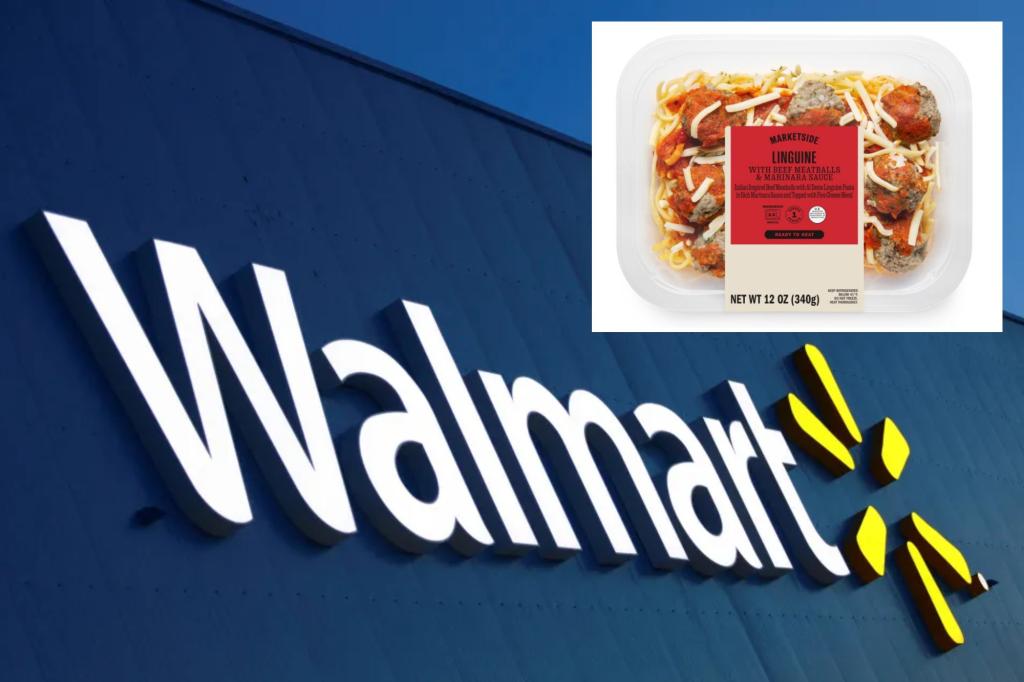USDA Warns of Listeria Risk in Walmart Linguine: A Public Health Concern
In a concerning development for consumers across the country, the U.S. Department of Agriculture’s Food Safety and Inspection Service has issued an urgent public health alert regarding a popular ready-to-eat meal sold at Walmart stores nationwide. The product in question – “Marketside linguine with beef meatballs and marinara sauce” – may be contaminated with Listeria monocytogenes, a potentially deadly bacterium that poses significant health risks, particularly to vulnerable populations. This alert comes on the heels of a related recall involving chicken fettuccine Alfredo meals from the same product line, suggesting a potentially wider contamination issue. The timing of this alert is particularly troubling as many Americans rely on convenient pre-packaged meals during busy fall schedules, with back-to-school routines and work commitments limiting time for meal preparation.
The affected linguine products can be identified by their distinctive packaging – 2-ounce clear plastic trays – and by checking the “best if used by” dates, which include September 22, 24, 25, 29, 30, and October 1, 2025. The extended shelf life of these frozen meals means many consumers may have purchased these products well before the alert was issued and still have them stored in their freezers, unaware of the potential danger they pose. The contamination was discovered during routine testing conducted by the manufacturer as part of an ongoing investigation into a related listeria outbreak. When test results came back positive for Listeria, health officials moved quickly to alert the public, though they stopped short of issuing a full recall at this stage. For consumers who have purchased these products, health officials are clear in their guidance: do not consume these meals. Instead, they should be thrown away immediately or returned to the place of purchase for a refund.
The current situation appears to be connected to a broader listeria concern that first emerged in June, when chicken fettuccine Alfredo meals from the same product line were recalled. This suggests the possibility of cross-contamination in the production facility or shared ingredients between the two products that may have been contaminated with the bacteria. Listeria contamination is particularly worrisome because unlike many foodborne pathogens, Listeria can grow even at refrigeration temperatures, meaning that proper refrigeration alone cannot protect consumers. Additionally, ready-to-eat foods like these pasta meals present an elevated risk because they typically aren’t reheated to temperatures high enough to kill the bacteria before consumption. The connection between these two separate but related incidents highlights the challenges food safety officials face in tracing and containing foodborne illness outbreaks in our complex food supply chain.
Listeriosis, the infection caused by Listeria bacteria, manifests with a range of symptoms that can easily be mistaken for other illnesses, making it particularly dangerous. Initial symptoms often resemble the flu – fever, muscle aches, fatigue – and may also include nausea, vomiting, and diarrhea. What makes listeriosis especially concerning is its ability to progress beyond these gastrointestinal symptoms to more serious complications. In severe cases, the infection can spread to the nervous system, causing headaches, stiff neck, confusion, loss of balance, and even convulsions. The incubation period for listeriosis is unusually long compared to other foodborne illnesses, with symptoms potentially appearing anywhere from a few days to as long as two months after consuming contaminated food. This extended timeframe creates additional challenges for diagnosis, as patients may not connect their illness to foods consumed weeks earlier. Health officials advise that anyone experiencing these symptoms within two months of potentially consuming contaminated food should seek medical attention promptly, as early treatment with antibiotics can help prevent more serious complications.
While listeriosis can affect anyone, certain populations face dramatically higher risks from this infection. Pregnant women are approximately 10 times more likely to contract listeriosis than the general population, and the consequences can be devastating. The infection can pass to the unborn child, potentially resulting in miscarriage, stillbirth, premature delivery, or life-threatening infection of the newborn. Adults aged 65 and older and people with weakened immune systems – including those with chronic conditions like diabetes, cancer, kidney disease, or those taking immunosuppressive medications – face a similarly elevated risk. For these vulnerable groups, listeriosis is not just an unpleasant illness but a potentially life-threatening condition with fatality rates as high as 20-30% despite proper treatment. The CDC estimates that approximately 1,600 people get listeriosis each year in the United States, resulting in about 260 deaths. These statistics underscore why public health officials take Listeria contamination so seriously, especially in ready-to-eat foods that might be consumed by high-risk individuals without further cooking.
This public health alert serves as a stark reminder of the invisible risks that can lurk in our food supply and the critical importance of food safety systems. For consumers, staying informed about food recalls and safety alerts has never been easier – or more important. The USDA and FDA offer free email notifications and mobile apps that provide timely information about food safety concerns. Beyond monitoring for recalls, practicing good food safety at home remains essential: keeping refrigerators at proper temperatures (below 40°F), consuming ready-to-eat refrigerated foods before their use-by dates, and reheating precooked foods until steaming hot can all help reduce the risk of listeriosis and other foodborne illnesses. For food manufacturers and retailers, this incident highlights the ongoing challenge of maintaining rigorous safety protocols throughout complex supply chains. As our food system becomes increasingly interconnected, with ingredients sourced globally and products distributed nationwide, the potential impact of contamination events grows accordingly. Public health officials, food producers, retailers, and consumers all play vital roles in a comprehensive food safety system that protects public health while maintaining access to convenient, affordable food options.














